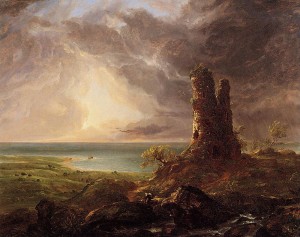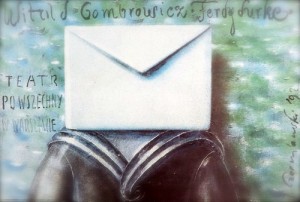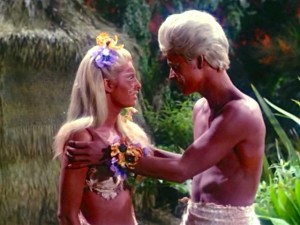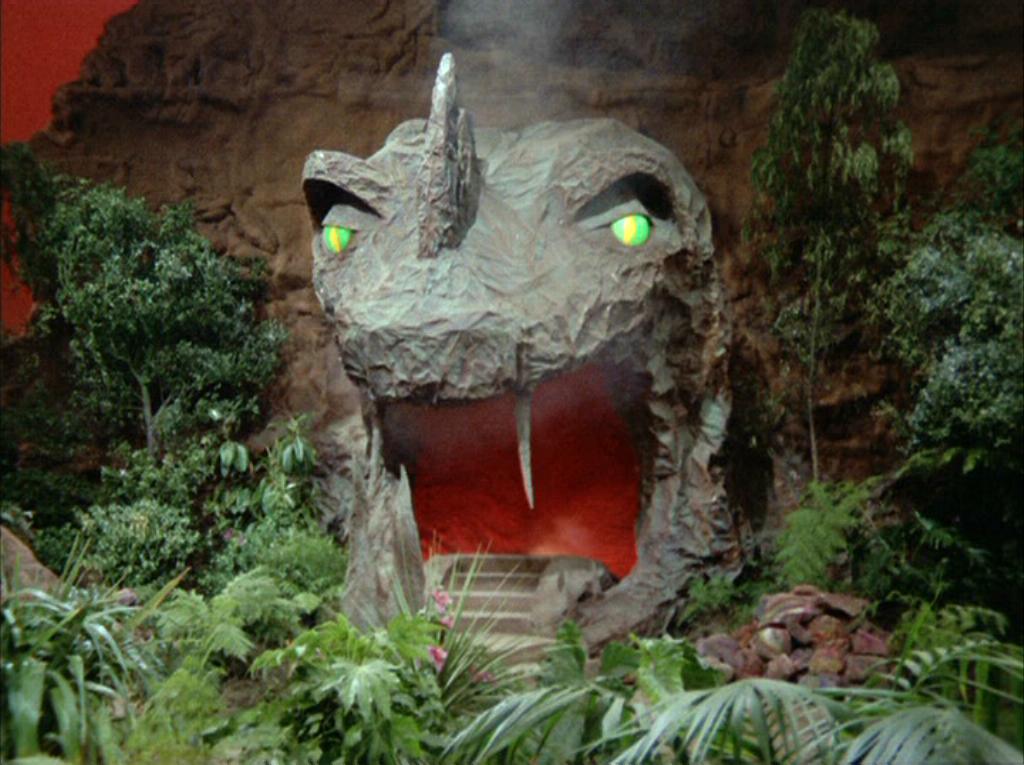Feeding the Psi God: Precognitive Dreaming, Memory, and Ritual
I’ve mentioned several times the debt I owe to J.W. Dunne and his 1927 book An Experiment with Time. Dunne was not a scientific researcher or a parapsychologist by training, but a military man and aeronautical engineer who became interested in questions of time and its structure after becoming aware of uncanny examples of apparent precognitive dreams he had had. His “experiment” was systematically recording his dreams and then comparing them in the days, weeks, and months afterward to events that occurred in his life. His book is filled with numerous apparent matches, although spread over the course of years. Precognitive dreams, he felt, happened at a relatively low frequency.
Because of our natural ‘temporal bias,’ we seldom consider the possibility that our dreams (let alone our waking thoughts) refer to future events, and Dunne notes this is the main reason precognitive dreams are so seldom reported. We simply don’t notice them. His theory, based on the precognitive dreams his self-experimentation revealed, was that the apparent flow of time was an effect of consciousness moving like a searchlight through a past, present, and future that already exist, rather like Einstein’s teacher Minkowski’s solid four-dimensional spacetime block. Dunne thought that dreams sometimes picked up this ‘already existing’ future information.
Dreams are a royal road to discovering the bizarre Moebius structure of time and mind; if you are not already keeping a dream diary, what are you waiting for?
Interestingly, although Dunne was writing at a time when the study of dreams was popular due to the influence of Freud, he ignores the then-mainstream psychoanalytic school of thought that dreams’ surface content consisted mainly of symbols standing in for hidden or latent ideas, concealing wishes repressed or buried in the unconscious mind. For Freud, dreams relate to events in daily life in a very nonliteral and usually non-obvious way. His method of dream interpretation required free associating on each remembered dream element to arrive at the latent dream thought. When done honestly and thoroughly, free association readily reveals real-life current preoccupations, worries, fears, and wishes, as well as powerful symbols from childhood. It also reveals that most dreams bear some connection to recent events in the dreamer’s life. Many dreams contain a scattering of elements that are immediately recognizable from recent experience—what Freud called “day residues”—but unpacking a dream through free association reveals many, many more such connections.
Dunne, instead, focused only on the surface content of his dreams and thus on obvious future things “seen” in his dreams. But given the way dreams mostly distort material, we might expect free association on dreams’ surface content to reveal much more future information thinly concealed in them, and this has been precisely my own experience since following Dunne’s method. To create a truly powerful method and theory of precognitive dream analysis, we need to combine Dunne’s hypothesis with Freud’s method of free-associative interpretation. To show how this works, I will discuss two vivid examples from my own limited experience with precognitive dreaming.
Unmanned
The first example I mentioned briefly in an earlier post: Before arising from bed on the morning of September 11, 2001, I briefly noted dreaming about seeing a pair of identical “mosques” on a street near my childhood home; they were low, perfectly square, 1-story buildings with drab corduroy-like facades, on the site where, in real life, my father had had his clinical psychology practice for a short time when I was a kid. No immediate association came to mind for the “mosques” element, but both the height and location of the buildings pointed in different ways to a standard Freudian “castration” symbolism—that is, symbols of vulnerability, emasculation, and threat.
 It is common for men to have dreams reflecting various long-term or immediate insecurities about their manhood. In my life I have occasionally dreamed of low buildings and ruined towers that seem, by being the distinct opposite of tall buildings, to have a “castration” symbolism (any noticed dream element will often, like a linguistic phoneme, derive its meaning from an alternative possibility it points to via opposition). In the case of this particular dream, that symbolism was what Freud called “overdetermined”—multiple symbolic elements pointed to the same meaning by different routes. The second route was really my sole association with the actual real-life building that these “mosques” replaced in my dream scenario.
It is common for men to have dreams reflecting various long-term or immediate insecurities about their manhood. In my life I have occasionally dreamed of low buildings and ruined towers that seem, by being the distinct opposite of tall buildings, to have a “castration” symbolism (any noticed dream element will often, like a linguistic phoneme, derive its meaning from an alternative possibility it points to via opposition). In the case of this particular dream, that symbolism was what Freud called “overdetermined”—multiple symbolic elements pointed to the same meaning by different routes. The second route was really my sole association with the actual real-life building that these “mosques” replaced in my dream scenario.
For any odd distortion of reality in a dream, you must first ask: What is this replacing or substituting for, and what significance does that substituted object—in this case, my father’s real-life office, replaced in the dream by “mosques”—have for me? This was easy: It was during the brief time my father had had his private practice in that specific location that I remember him being called one evening to meet a desperate male transgender client of his who was having some kind of suicidal crisis. So I associated the building, the place of the dream image, with a kind of emasculation—in other words, “castration” again. I also associated it vaguely with ’suicide’—also relevant to the themes of the eventful day that followed this dream.
It must have been much later that evening, or possibly the next morning, that I noticed my dream notes and recalled the weird fact that the dream had contained two identical square “mosques” with facades that were just like the distinctive corrugated facades of the twin towers that had been destroyed in the suicide attack in New York. I was not yet accustomed to looking for precognitive material in my dreams—I had not yet read Dunne—but this seemed more than coincidental.
Traversing Associations
The distortion of daily events to create the bizarre tableaux in dreams is not, as Freud thought, a ruse to disguise shameful wishes from a ‘censor’ in the mind, but rather a natural aspect of the associative way that experiences and knowledge are remembered. Dreams obey a logic exactly like the classical “arts of memory” used by orators (and really, everyone) in pre-Gutenberg and especially pre-literate times. Essentially, the function of dreaming is the formation of long-term memories through playful associations, the art of memory operating automatically while we sleep. (I outlined this theory in 2010, and in late 2013, I was vindicated by a Manchester psychologist named Sue Llewellyn, who advanced exactly this notion in the journal Behavioral and Brain Sciences, along with a sophisticated hypothesis of how it may actually work in the brain.) Freud was mistaken in his theory of dreams’ function, but he was absolutely correct in his method of dream interpretation—free-association—because association is exactly how memory itself works.
Even though some events seen in dreams or visions are traumatic, the emotion that carries the psi signal may really be a kind of excitement.
I have found in my own case (and I’d bet it’s generally the case) that a given dream will pertain to a confined period of time or a distinct emotionally salient episode. I think this may have to do with how dreams not only encode memories but also preserve a rudimentary sense of chronology in our lives. Chronology can only come from a sense of events occurring together and thus remaining associated closely with each other in our long-term-memory store. There is no fixed objective temporal yardstick in our minds (or anywhere) but only a cross-correlation of events, rather like the way tree-rings corroborate and calibrate Carbon-14 data and vice versa. Chronology, ultimately, is an echo-chamber of self-reference, in our individual biographies as much as in the study of human and geologic history.
Most dreams relate to past events, incorporating them into long-term-memory in their surreal, associative, rebus-like manner. Notably, if my 9/11 dream really was “of” a future event, it nevertheless dealt with its salient details in the same scrambled ‘art of memory’ fashion: Islam was ‘illogically’ conflated with the ruined towers, and in a completely different setting than Manhattan, a setting that I specifically associated with emasculation and suicide. (For a brief introduction on the Art of Memory and how to apply it in waking life, see this article.)
 Every noticed element or detail in a dream is a relevant term in the memory hieroglyph being formed (and it’s a very rare dream when we can remember all or even most of the details). It is common in dreams for attributes of one thing to be given to another and for subject and object to be reversed or conflated (for instance my dream’s squashing together “Islam” and the towers). Often highly complex puns are also involved (although I could not detect any in this case). The real-life experiences being encoded are usually very recognizable after even brief free association on those elements. In this case, however, I didn’t seem to be dreaming about any personal sense of vulnerability in the day or two leading up to the dream, but about a literal traumatic “castration” of our country that happened just a couple hours after it, the suicide attack on the towers. The symbolism of Al-Qaeda’s bold gesture was deliberate and unmistakeable, and thousands of people reported vivid dreams, visions, and premonitions of those attacks.
Every noticed element or detail in a dream is a relevant term in the memory hieroglyph being formed (and it’s a very rare dream when we can remember all or even most of the details). It is common in dreams for attributes of one thing to be given to another and for subject and object to be reversed or conflated (for instance my dream’s squashing together “Islam” and the towers). Often highly complex puns are also involved (although I could not detect any in this case). The real-life experiences being encoded are usually very recognizable after even brief free association on those elements. In this case, however, I didn’t seem to be dreaming about any personal sense of vulnerability in the day or two leading up to the dream, but about a literal traumatic “castration” of our country that happened just a couple hours after it, the suicide attack on the towers. The symbolism of Al-Qaeda’s bold gesture was deliberate and unmistakeable, and thousands of people reported vivid dreams, visions, and premonitions of those attacks.
One of Dunne’s most important observations was that in cases of remote historical events being dreamed about, such as volcanic eruptions, it was not the actual event he was picking up on but the occasion of his own learning of the event in the news. This is a crucial point. It has been suggested that even in cases of apparent clairvoyance or “remote viewing,” the information being received could actually be precognitive information of the future feedback session verifying the RV session’s accuracy—what we might call the “scene of confirmation”—and not the distant event per se. It is at least worth considering whether all psi may involve precognition and, more specifically, precognition of one’s own future emotional reactions to events.
It is at least worth considering whether all psi may involve precognition and, more specifically, precognition of one’s own future emotional reactions to events.
Even though some events seen in dreams or visions are traumatic, the emotion that carries the psi signal may really, I suggest, be a kind of excitement. As I argued in my “Trauma Displaced in Time” post, I suspect the energy or current that carried information about the attacks back in time to dreamers, artists, etc. was precisely the conflicting giddy/horrified “enjoyment” that 9/11 sparked in a nation of TV viewers over the course of that day: excitement at the thrilling cinematic spectacle, which on an unconscious level seemed unreal, as well as even a basic amoral sense of ‘survivor’s relief’ (“thank god it didn’t happen to me,” “thank god I and my loved ones weren’t in those towers,” etc.).
The genius of the attacks was not simply that the terrorists managed to symbolically “castrate” our country but that they got a whole nation to enjoy the spectacle and its aftermath in an unbearable, unspeakable, unacknowledgeable way. Enjoyment in this equivocal sense is, I am increasingly persuaded, a core element of some psi phenomena. My second, very recent example will illustrate this same principle, albeit in a much more personal and non-traumatic context.
Pushing the Envelope
I must first explain that this precognitive dream experience arose as an unintended side-effect of my hitherto disappointing efforts at remote viewing (RV). Like I am sure many who get interested in psi research, I have eagerly read guides by the pioneers and masters such as Russell Targ, Joe McMoneagle, and Ingo Swann; I’ve even read books by earlier authors on clairvoyance like Upton Sinclair, whose book Mental Radio contains a chapter by his clairvoyant wife Mary Craig Kimbrough giving very clear instructions to her method, and Harold Sherman, the clairvoyant who accurately remote-viewed aviator Hubert Wilkins’ arctic journey (recorded in the classic Thoughts Through Space) and who later wrote popular guides to ESP. As the easiest “protocol” I can think of, I simply ask my wife to print out some random picture from the internet while she’s at work during the day, seal it in a brown envelope, and set it on the table next to my bed in the evening. Since it is late at night that I feel most “receptive” and it is easiest to attain a relaxed or hypnagogic state, it is before sleep that I attempt to sketch my impressions of what is in the envelope.
 Despite my efforts, I am the world’s worst remote viewer. With only occasional unexciting exceptions, I have had very few “hits” doing this. Recently, however, I modified the protocol to allow my dreams to maybe lend a hand. Instead of going ahead and opening the envelope after attempting to RV its contents, I wait until the next morning to open the envelope. In trying to view the picture inside the envelope the night before, I even imagine the scene of pulling it out of the envelope at the breakfast table; and prior to falling asleep, I silently request my unconscious to deliver information about the picture in the envelope. This has produced interesting and, in a couple cases, actually stunning results. But the results are indirect and symbolic, precisely in dreams’ usual evasive manner, and in one case my dream showed me specifically the “scene of confirmation” rather than the picture I was trying to RV.
Despite my efforts, I am the world’s worst remote viewer. With only occasional unexciting exceptions, I have had very few “hits” doing this. Recently, however, I modified the protocol to allow my dreams to maybe lend a hand. Instead of going ahead and opening the envelope after attempting to RV its contents, I wait until the next morning to open the envelope. In trying to view the picture inside the envelope the night before, I even imagine the scene of pulling it out of the envelope at the breakfast table; and prior to falling asleep, I silently request my unconscious to deliver information about the picture in the envelope. This has produced interesting and, in a couple cases, actually stunning results. But the results are indirect and symbolic, precisely in dreams’ usual evasive manner, and in one case my dream showed me specifically the “scene of confirmation” rather than the picture I was trying to RV.
Let me explain: Late on a Friday evening two weeks ago, I did my usual, meditating in bed and then sketching images and impressions that flashed before my mind’s eye while imagining the scene of opening the brown envelope over breakfast. Then in the morning, I arose and groggily jotted a few notes on the main dream I could recall from the night before: something about a lush, green, idyllic pastoral landscape that was somehow maintained by an advanced futuristic technology.
Although there is nothing more boring than someone else’s dream, I must give a few details because they are significant: In this dream landscape was a group of people of uncertain ethnicity—it seemed significant that they were “dark skinned but not black/African”—who were reluctant to leave their Eden, despite the urging of an affable, white, heroic military man. That man was communicating by phone to some ship that was under attack—I pictured a sea-vessel on fire some distance away at an ocean port or harbor. There was also a scene of two of the “dark skinned” people, a man and a woman, facing each other at close distance, gazing into each others’ eyes almost theatrically, as if they were about to sing a duet to each other.
 Over breakfast, I opened the envelope to reveal the accompanying picture of hands in an upright-open gesture. It bore zero resemblance or connection to my several pages of before-bed scribbled impressions, even by a remote stretch of the imagination. I put it down as another RV failure. However, a little while after breakfast I picked up the picture again and free-associated on it. The first thing that came to mind was the nearly identical gesture of greeting used by the primitive, deeply-tanned Polynesian-style villagers in the original Star Trek Season Two episode “The Apple”—a typical ‘Gnostic’ Trek episode about an ancient planetary computer named Vaal that keeps the planet’s inhabitants in an innocent and ignorant (but idyllic) state of nature.
Over breakfast, I opened the envelope to reveal the accompanying picture of hands in an upright-open gesture. It bore zero resemblance or connection to my several pages of before-bed scribbled impressions, even by a remote stretch of the imagination. I put it down as another RV failure. However, a little while after breakfast I picked up the picture again and free-associated on it. The first thing that came to mind was the nearly identical gesture of greeting used by the primitive, deeply-tanned Polynesian-style villagers in the original Star Trek Season Two episode “The Apple”—a typical ‘Gnostic’ Trek episode about an ancient planetary computer named Vaal that keeps the planet’s inhabitants in an innocent and ignorant (but idyllic) state of nature.
Lost Innocence
The entire original Star Trek series is burned deeply into my neural wiring as a result of a childhood spent watching reruns of the series every afternoon. Although I have not seen “The Apple” in well over three decades, many elements, including the natives’ palms-up greeting, have always stuck with me, and my mild disappointment over a failed RV attempt turned quickly to delight: The picture in the envelope had clearly triggered an association to that episode. (In selecting the picture, my wife could not have anticipated this association because she’s a ST:TNG gal and had never seen “The Apple.”)
 Because it was Saturday, I immediately re-watched “The Apple” on Amazon, to refresh my memory about the episode as well as revel in what seemed like a real psi “hit.” It was even campier than I remember, but it clearly matched closely, or exactly, all the elements I remembered from my dream. But as I reveled in this success, I realized that the dream had not been “about” the image in the envelope at all; it was precisely about what I was right then doing: re-watching a particular old Star Trek episode in a state of eager excitement. My dreaming mind hadn’t peered into the shut envelope, in other words; instead it picked up on the most emotionally salient event in the landscape of my near future. That event bore a chicken-and-egg relationship to the dream that precognized it. It was truly ‘acausal’ or even Moebius-like in precisely the way we should predict could occasionally happen in a science-fictional world where information can travel backward in time.
Because it was Saturday, I immediately re-watched “The Apple” on Amazon, to refresh my memory about the episode as well as revel in what seemed like a real psi “hit.” It was even campier than I remember, but it clearly matched closely, or exactly, all the elements I remembered from my dream. But as I reveled in this success, I realized that the dream had not been “about” the image in the envelope at all; it was precisely about what I was right then doing: re-watching a particular old Star Trek episode in a state of eager excitement. My dreaming mind hadn’t peered into the shut envelope, in other words; instead it picked up on the most emotionally salient event in the landscape of my near future. That event bore a chicken-and-egg relationship to the dream that precognized it. It was truly ‘acausal’ or even Moebius-like in precisely the way we should predict could occasionally happen in a science-fictional world where information can travel backward in time.
If anyone’s innocence is lost here, it should be yours: Time is not what you were raised to think it is. Neither is your own mind.
That sounds preposterous, of course. A skeptic would say, reasonably, that watching the episode was obviously only an effect of my dream and not its cause; however, they would then have to explain the uncanny connection to the hand gesture in the photograph, which was actually the crucial mediating link or “short circuit” in the motivational chain that led to my watching the episode in the first place. In other words, without admitting the precognitive dreaming effect, you would then be forced to posit a “synchronicity” just like the scarab innocently arriving at the window of Carl Jung’s Zurich office at the precise moment his patient was telling him a dream about a man offering her a scarab: You would be forced to say that it was an uncanny meaningful coincidence stage-managed by the universe, or by God, or somehow orchestrated by an “archetype of the collective unconscious.”
I have argued over several posts why it makes no sense that a symbolic formation, by itself, could exert a shaping force on events. Granting “archetypes” this kind of stage-managing power in our lives is truly magical thinking, in a negative sense. We shape our universe to be meaningful, but often unconsciously or unknowingly, through precognitively informed actions that orient toward fulfillment of personal symbolic motifs. “Archetypes” are a perfectly fine concept so long as we take them in this latter, reduced sense. As impossible or even preposterous as it sounds, the simplest explanation for my “Apple” experience is, I believe, exactly what I think really happened in the scarab episode too: a simple case of precognitive dreaming, in which a future signal was amplified because post-hoc actions enhanced particular experienced emotions (namely excitement) during the “scene of confirmation.”
A Jungian Star Trek fan would, of course, point out some obvious archetypal aspects of “The Apple”: the “dark-skinned” villagers or Vaal himself as the shadow, for example, and Kirk as the “serpent” leading to a loss of innocence. But everything has an archetype in it, if you want to look for one. My narrative doesn’t seem to be about lost innocence. My innocence was lost ages ago. If anyone’s innocence is lost here, it should be yours: Time is not what you were raised to think it is. Neither is your own mind. Dreams are a royal road to discovering the bizarre Moebius structure of time and mind; if you are not already keeping a dream diary, what are you waiting for?
Vaal and Redemption
I have argued that psi events build around trivial unremarkable coincidences that we feed and fatten by an imagination and a mentality that is open to magic or psi—“feed,” you might say, rather the same way the inhabitants of Gamma Trianguli VI ritualistically feed their computer god Vaal by pouring offerings of food into its big reptilian stone head.
 The minor objective coincidence between the significance for me of an old Star Trek episode and a picture my wife randomly chose off the Internet by itself was not enough to “power” any uncanny event. What amplified the signal was my (a) interest in psi, expressed through an RV attempt (a kind of ritual), coupled with (b) interest in coincidences (after all, I’ve been writing about them for several weeks on this blog—another kind of ritual), coupled with (c) a habit of delving into and ‘commemorating’ personal symbols that emerge in this path. This combined to produce a recursive spiral of enjoyment that, I argue, generated a precognitive dream.
The minor objective coincidence between the significance for me of an old Star Trek episode and a picture my wife randomly chose off the Internet by itself was not enough to “power” any uncanny event. What amplified the signal was my (a) interest in psi, expressed through an RV attempt (a kind of ritual), coupled with (b) interest in coincidences (after all, I’ve been writing about them for several weeks on this blog—another kind of ritual), coupled with (c) a habit of delving into and ‘commemorating’ personal symbols that emerge in this path. This combined to produce a recursive spiral of enjoyment that, I argue, generated a precognitive dream.
The ritual aspect here is crucial I think. I have found that the ritual of re-watching, re-reading, or purchasing books or TV shows or other things from my formative years that emerge in my psi attempts and synchronicities actually contributes to generating the excitement and epiphanies that precognitive phenomena like dreams and RV attempts pick up on. In other words, honoring and commemorating psi successes and synchronicities actually contributes to creating them, in a kind of feedback effect, and an established habit or ritual of doing so is a crucial “feed-forward” component necessary to actually manifest these psi effects with any regularity. My psi god, if you will, or my personal Vaal-like unconscious self (Vaal=VALIS? … hmmm) responds to my offerings by producing affirmatory anomalies, encouraging this particular path.
Now, if I can just get my inner-child-psi-mind to predict the stock market and not just personal associations to pictures in envelopes, I’ll have achieved something…






“Vaal = VALIS”? Too good.
This post is a great example of why I would really like to see this stuff tied up into a book. It seems to me that each of your posts, by themselves, are complex; each, by itself, is also incomplete. It’s together that their power really comes through. Your recent re-organization of click-throughs to previous posts helps a great deal for anyone who wants to piece together the whole story, but I think a paper-in-hand format would be even better!
For whatever reason, when I first saw the serpent-head temple pic at the head of this post, I thought of the Sleestack temple in LAND OF THE LOST. Cheesy as it was, IMO it was the best original science fiction on the air during the period it was original.
Keep ’em coming!